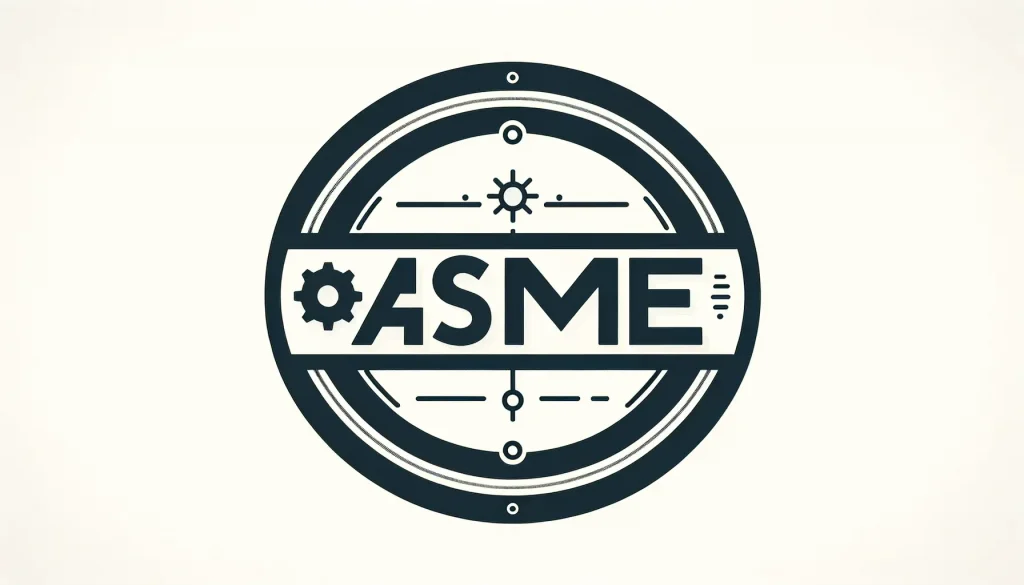
Which Type of Standards are Used for Pressure Vessels?
Understanding the Importance of Pressure Vessel Standards
When it comes to manufacturing pressure vessels, the importance of adhering to established standards cannot be overstated. These standards, such as the ASME Pressure Vessel Standards and various international guidelines, are not just a set of rules; they are the backbone of ensuring safety and efficiency in operations. At Red River, we see these standards as a testament to our commitment to quality and safety. They guide our processes, from design and fabrication to testing and certification, ensuring that every pressure vessel we produce meets the highest standards of safety and performance.
The Role of Pressure Vessels in Industry
Pressure vessels are a critical component in a wide range of industries, including oil and gas, power generation, biogas, and more. They play a vital role in our society, from heating our homes to powering industries, making it essential that they are designed and manufactured with precision and care. At Red River, we embrace challenging projects that push the boundaries of innovation and efficiency. Our team’s expertise in pressure vessel fabrication and industry norms ensures that we deliver products that not only meet but exceed the expectations of these demanding sectors.
Overview of Global Pressure Vessel Standards
The world of pressure vessel manufacturing is governed by a myriad of standards, each designed to ensure the utmost safety and quality. These include the American Society of Mechanical Engineers (ASME) standards, international standards like ISO, and specific regional regulations. Understanding and complying with these diverse standards is a challenge we proudly accept at Red River. Our expertise in global standards and specifications for pressure vessels positions us as a leader in the field, capable of navigating the complex regulatory landscape. Whether it’s adhering to the ASME code, understanding the European Pressure Equipment Directive, or meeting other international requirements, our team is equipped to deliver pressure vessels that stand up to global standards.
ASME Standards for Pressure Vessels
ASME Code Section VIII – An Overview
ASME Code Section VIII is the cornerstone of pressure vessel standards. It outlines the fundamental principles for the design, fabrication, inspection, and testing of pressure vessels. This section delves into the specifics, including design formulas, materials, and construction methods, ensuring vessels are built to withstand extreme conditions while prioritizing safety.
Key Requirements of ASME Pressure Vessel Standards
ASME Pressure Vessel Standards set stringent requirements for pressure vessel design and construction. They cover aspects such as material selection, welding procedures, and non-destructive testing. These requirements serve as a roadmap for manufacturers, ensuring that every aspect of pressure vessel production adheres to established guidelines.
How ASME Standards Ensure Safety and Efficiency
Safety and efficiency go hand in hand in the world of pressure vessels. ASME Standards are designed to enhance both aspects. By specifying rigorous testing and inspection procedures, these standards ensure that pressure vessels are not only safe but also operate at peak efficiency, contributing to cost savings and environmental responsibility.
International Standards for Pressure Vessels
ISO Standards in Pressure Vessel Design
ISO Standards complement ASME in the realm of pressure vessel design. They provide a global perspective, harmonizing design principles and facilitating international trade. Understanding ISO Standards is essential for manufacturers operating on a global scale.
Comparing ASME and ISO Pressure Vessel Standards
Comparing ASME and ISO Standards helps navigate the nuances of pressure vessel design and fabrication. While ASME is widely adopted in North America, ISO offers a broader global perspective. Understanding the similarities and differences ensures compliance in diverse markets.
European Pressure Equipment Directive (PED)
The European Pressure Equipment Directive, or PED, is a crucial consideration for those doing business in Europe. It sets forth requirements for pressure equipment within the European Union. Complying with PED is essential for market access and safety within the EU.
Pressure Vessel Design and Fabrication Standards
Material Selection for Pressure Vessels
Selecting the right materials is paramount in pressure vessel design. This section explores the materials best suited for different applications, considering factors like temperature, pressure, and corrosion resistance.
Design Considerations Under Various Standards
Design considerations vary under different standards, and understanding these nuances is vital. Whether it’s ASME, ISO, or regional regulations, each standard may require specific design approaches to ensure safety and compliance.
Fabrication and Welding Standards
Fabrication and welding are critical stages in pressure vessel production. This section covers the techniques and standards that guide these processes, ensuring the integrity and longevity of the vessels.
Pressure Vessel Testing and Certification
Routine Testing Procedures for Pressure Vessels
Routine testing is essential to verify the integrity of pressure vessels. This section outlines the testing procedures, including hydrostatic tests and non-destructive examinations, to ensure vessels meet safety and quality standards.
Certification Processes for Compliance
Certification is the final step in the journey of a pressure vessel, signifying compliance with standards. This section explains the certification processes and the significance of compliance for safety and regulatory purposes.
The Role of Third-Party Inspection Agencies
Third-party inspection agencies play a crucial role in ensuring the integrity of pressure vessels. This section discusses their role in conducting impartial inspections, offering an additional layer of quality assurance.
Pressure Vessel Safety and Compliance
Safety Protocols in Pressure Vessel Operations
Safety protocols are paramount in the operation of pressure vessels. This section explores the best practices and protocols to maintain a safe working environment when dealing with pressure vessels.
Compliance with Local and International Regulations
Compliance with local and international regulations is non-negotiable. This section emphasizes the importance of staying up-to-date with evolving regulations and the consequences of non-compliance.
Updating Safety Standards in Pressure Vessel Maintenance
Safety standards evolve, and regular maintenance is key to keeping pressure vessels safe and compliant. This section highlights the importance of staying current with maintenance practices to ensure ongoing safety and efficiency.
Industry-Specific Pressure Vessel Standards
Standards in the Oil and Gas Industry
The oil and gas industry relies on pressure vessels for various critical processes. Understanding industry-specific standards is vital for ensuring safety and efficiency in this demanding sector. We delve into the specific regulations and best practices that govern pressure vessels in oil and gas operations.
Pressure Vessels in the Chemical Processing Industry
The chemical processing industry has unique requirements when it comes to pressure vessels. This section explores the specialized standards that govern pressure vessel design and fabrication in chemical processes, emphasizing the importance of material selection and corrosion resistance.
Unique Standards for Biomedical Pressure Vessels
Biomedical applications demand precision and reliability. Pressure vessels in this field have their own set of standards to ensure the safety of medical equipment and processes. We explore these unique standards and their role in biomedical pressure vessel manufacturing.
Technological Advancements in Pressure Vessel Design
Innovations in Material Technology
Innovations in material technology have a profound impact on pressure vessel design. We examine the latest advancements in materials, from high-strength alloys to composites, and their role in enhancing the performance and longevity of pressure vessels.
Impact of Digital Simulation on Pressure Vessel Design
Digital simulation tools have revolutionized pressure vessel design. This section discusses how digital simulations enable engineers to optimize designs, predict performance, and ensure safety before the physical fabrication stage, saving time and resources.
Future Trends in Pressure Vessel Standards
The world of pressure vessel standards is ever-evolving. We explore future trends, such as increased emphasis on sustainability, automation, and integration of IoT technology, that are shaping the future of pressure vessel design and compliance.
Pressure Vessel Standards and Environmental Considerations
Eco-friendly Materials and Practices in Pressure Vessel Manufacturing
Environmental responsibility is becoming increasingly important. This section highlights the adoption of eco-friendly materials and practices in pressure vessel manufacturing, aligning with global efforts to reduce environmental impact.
Standards Addressing Environmental Impact
Addressing environmental impact is a key consideration in pressure vessel standards. We delve into standards that focus on minimizing emissions, energy efficiency, and reducing the ecological footprint of pressure vessel operations.
Sustainable Practices in Pressure Vessel Design and Use
Sustainability is not just a buzzword; it’s a guiding principle. This section explores sustainable practices in pressure vessel design and usage, showcasing how adherence to eco-friendly principles benefits both the environment and your bottom line.
Navigating the Complexities of Pressure Vessel Regulations
Understanding Regional Variations in Standards
Pressure vessel regulations can vary by region, posing challenges for manufacturers. We provide insights into understanding these regional variations and offer guidance on ensuring compliance in diverse markets.
The Challenge of Complying with Multiple Standards
In a globalized world, complying with multiple standards is a common challenge. This section discusses the complexities of meeting various standards simultaneously and offers strategies to streamline compliance efforts.
Strategies for Effective Compliance Management
Effective compliance management is essential. We outline strategies for managing compliance efficiently, ensuring that your pressure vessels meet the required standards while minimizing complexities and operational disruptions.
Why Choose Red River for Your Pressure Vessel Needs
Our Expertise in Adhering to Diverse Standards
At Red River LLC, our expertise extends across a spectrum of standards, from ASME to industry-specific regulations. We pride ourselves on our ability to navigate the complexities of diverse standards, ensuring that your pressure vessel needs are met with precision and compliance.
Custom Solutions for Pressure Vessel Design and Fabrication
We understand that one size does not fit all. Red River LLC specializes in tailoring pressure vessel solutions to your unique requirements. Whether you need custom internals, specialized coatings, or modular solutions, we’re committed to delivering exactly what you need.
Commitment to Safety, Quality, and Compliance
Safety, quality, and compliance are the cornerstones of our commitment at Red River LLC. When you choose us for your pressure vessel needs, you’re choosing a partner dedicated to upholding the highest standards in every aspect of our work. Your safety and satisfaction are our top priorities.
Need a reliable partner?
Red River specializes in the design and manufacturing of pressure vessels. We also fabricate related items such as prefabricated spools and skid packages.
Reach Out to us today and experience the Red River difference. Where American Made and American Values come together, we care more.
FAQs About Pressure Vessel Standards and Manufacturing
What are the key international standards for pressure vessels?
Pressure vessels adhere to various international standards, including the American Society of Mechanical Engineers (ASME) standards, ISO standards, and regional regulations such as the European Pressure Equipment Directive (PED). These standards ensure safety, quality, and compliance in pressure vessel design and manufacturing.
How do pressure vessel standards contribute to safety and efficiency?
Pressure vessel standards set rigorous guidelines for design, materials, fabrication, and testing. By following these standards, manufacturers ensure that pressure vessels are built to withstand extreme conditions, ensuring both safety and operational efficiency.
Are there industry-specific pressure vessel standards?
Yes, different industries have specific standards for pressure vessels. For instance, the oil and gas industry, chemical processing, and biomedical applications have unique requirements. These industry-specific standards address the particular needs and challenges of each sector.
What technological advancements have impacted pressure vessel design?
Technological advancements have significantly influenced pressure vessel design. Innovations in materials, such as high-strength alloys and composites, enhance vessel performance. Digital simulation tools allow for more accurate design predictions, reducing the need for physical testing.
How can companies navigate the complexities of pressure vessel regulations in different regions?
Understanding regional variations in standards is crucial. Manufacturers must stay informed about the specific regulations in each market they serve. Compliance management strategies, such as maintaining a comprehensive database of requirements, can help streamline efforts and ensure adherence to multiple standards.
Related Blog Post
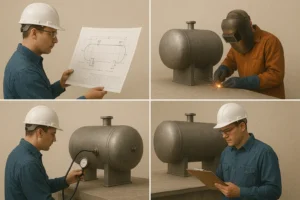
Pressure Vessel Design & Engineering: Concept to Launch
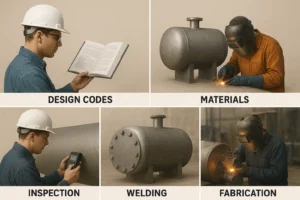
What is Pressure Vessel Design and Engineering: Code-Ready Guide
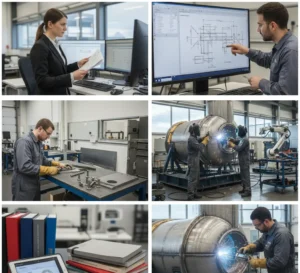
What are the Key Factors in Pressure Vessel Engineering
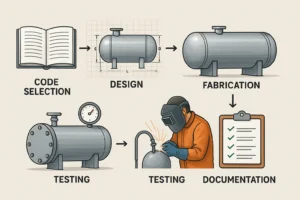
How Do You Design a Pressure Vessel: A Step-By-Step Guide
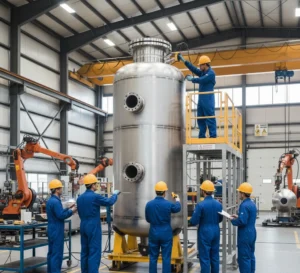
What is Pressure Vessel Fabrication and Manufacturing
About Author

